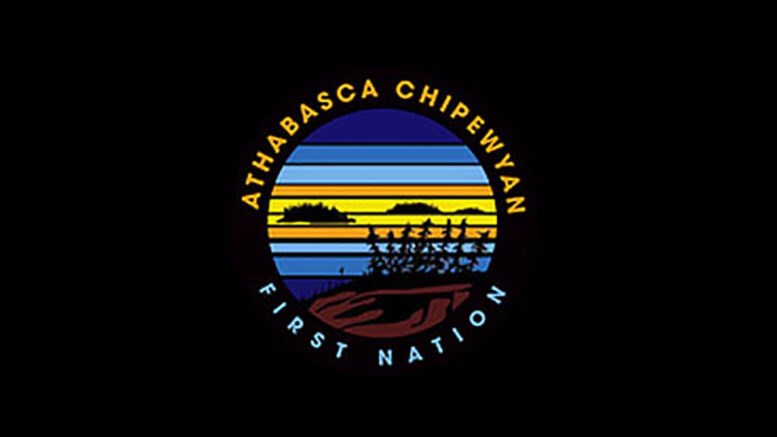(ANNews) – Athabasca Chipewyan First Nation’s (AFCN) chief served the head of the Alberta Energy Regulator (AER) with lawsuit papers at a town hall-style meeting in Fort Chipewyan on March 5, where the regulator was lambasted for its coverup of the Kearl oil mine spill two years ago.
When it was Chief Allan Adam’s turn to speak at the event, he followed through on an earlier promise to pursue legal action against the AER.
“As the chief of the Athabasca Chipewyan First Nation I am handing you these documents that say we are going to court … we are suing you for the damage that you have caused the community of Fort Chip,” he said while holding up the papers.
“We’ve had enough,” Adam told AER CEO Laurie Pushor as he handed him the documents to audience applause. “No more of these dirty dealings are going to … continue on our traditional territories.”
The AFCN and Misikew Cree First Nation, which live downstream from Imperial Oil’s Kearl mine, weren’t informed that the mine’s tailings pond had been leaking for at least nine months until February 2023, when a 5.4-million-litre spill occurred.
According to reporting from The Canadian Press based on Imperial Oil documents, the AER was aware of seepages from the mine as early as 2019.
According to the ACFN statement of claim, there were three major leakages from the Kearl mine between May 2022 and November 2023.
“The failings of the AER in relation to the Kearl Facility are also symptomatic of deficiencies in the provincial regulatory system as a whole, including its lack of consultation or consideration for how cumulative impacts affect ACFN’s aboriginals Treaty rights,” reads the nation’s statement of claim.
The AER “knew or ought to have known that ACFN would be harmed by the uncontrolled discharge of tailings flowing into land waterbodies feeding the Athabasca and Firebag Rivers,” the statement of claim continues, alleging the regulator violated its “duty of care to ACFN as a downstream First Nation.”
“The AER failed to carry out this duty and this breach harmed ACFN’s ability to exercise their Treaty rights on their traditional territory safely.”
The lawsuit is asking that the AFCN receive at least a portion of the royalties the Alberta government received from activities at the mine from May 2023 to November 2023, which the statement of claim pegs at $300 million, in addition to $500 million in damages.
ACFN Councillor Mike Mercredi told AER representatives at the meeting that he has a “graveyard full of family and friends that you killed” in apparent reference to increased rates of certain cancers in Fort Chipewyan.
“The blood is on your hands,” Mercredi added.
The Alberta government commissioned two studies into cancer rates in Fort Chipewyan — in 2009 and 2014 — which were inconclusive. Chief Adam has since then called for an independent study, “where government and industry have no participation in it.”
At the meeting with the AER, Elder Edward Flett told APTN that “[e]verything is going downhill” with the local water as a result of tar sands extraction.
“My traditional way of life … it has been drying up with no water. Climate change just changes everything,” Flett added.
It wasn’t only members of the First Nation that expressed its displeasure at the meeting.
“I don’t want to be a part of it anymore … if it was up to me I would shut down the oil sands today,” said Fort Chipewyan Métis President Kendrick Cardinal, who is also a Wood Buffalo municipal councillor. “Don’t try to line our pockets. That is what is happening.”
AER CEO Pushor told APTN News that the regulator “will respond appropriately” to ACFN’s lawsuit.




